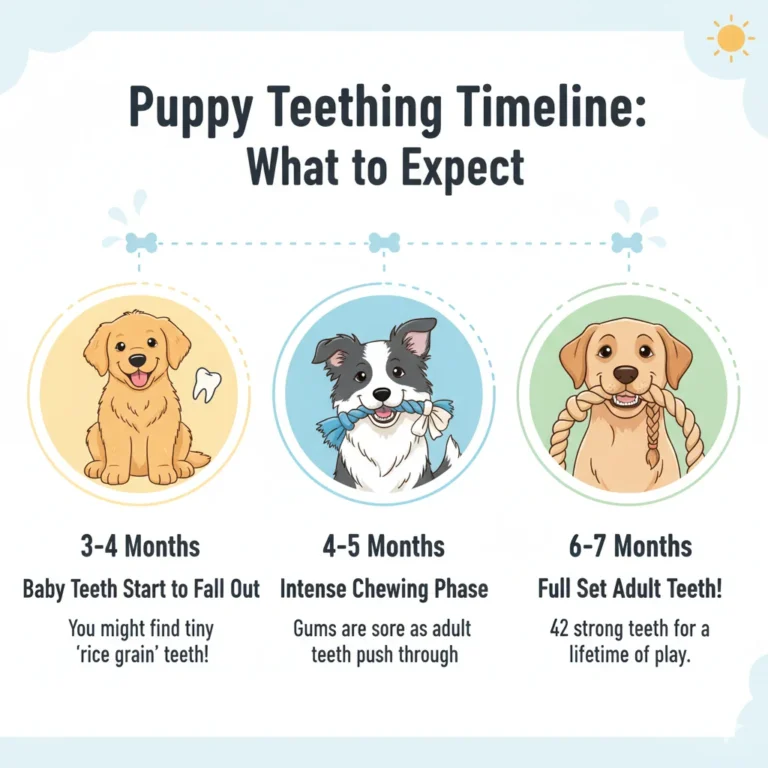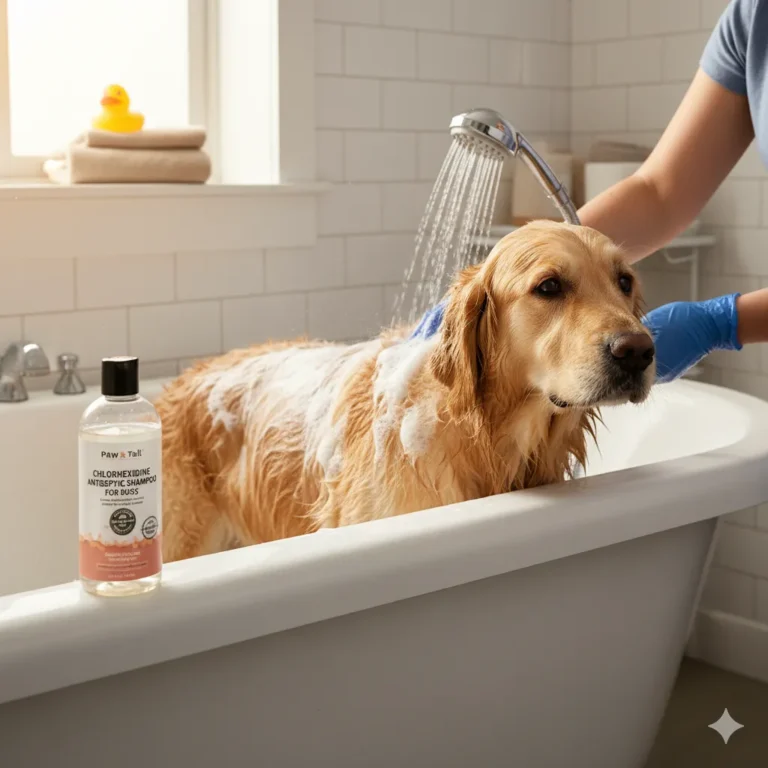
Author: DogsBlogSS Team
⚠️ Disclaimer: This article is for informational purposes only and is not a substitute for consulting a veterinarian.
pedialyte for dogs
If your dog has been under the weather—vomiting, having diarrhea or just looking a little weak—you may have heard about using Pedialyte for dogs. It’s a human electrolyte drink many of us have used ourselves. But what about our four‑legged friends? Can we safely give it? And does it really help? In this article I’ll walk you through everything you need to know about pedialyte for dogs: when it might help, when it could hurt, how to use it properly, and when you should absolutely see a vet. Think of it as sitting down with a friend who happens to have a sick pup—and together you’re figuring out the best way to help.
Understanding Pedialyte and its Use in Dogs
Can you give Pedialyte to dogs?
Yes—but with caution. The short answer: you can give Pedialyte to a dog in certain mild dehydration situations, but it’s not a universal fix. According to vet Dr. Monica Tarantino of PetMD, “in small quantities, Pedialyte is likely safe for most dogs, but there are many reasons why you should not give your dog Pedialyte.” (According to PetMD )
And the American Kennel Club (AKC) notes that while a vet may recommend it for dogs low on fluids, the underlying cause of why your dog is low on fluids has to be addressed. (According to American Kennel Club)
In short: you can ask if it’s appropriate, but you shouldn’t treat it like a remedy you grab from the shelf without thinking.
Is Pedialyte safe for dogs?
That depends on the situation, the product type, and the dog’s health. According to sources:
- Since Pedialyte is formulated for humans, its electrolyte balance (especially sodium) is higher than what dogs typically need. (According to PetMD+2American Kennel Club+2)
- Flavored versions may include sugar, artificial sweeteners (like sucralose or xylitol) that dogs may not tolerate well. (According toAmerican Kennel Club+1)
- If a dog has heart or kidney disease, diabetes, or is vomiting continuously, giving Pedialyte may actually make things worse. (According to dogsnaturallymagazine.com+1)
Vet Dr Amy Attas (NYC, City Pets) says: “We want to stick to un‑flavored Pedialyte… dogs don’t process these sugars in the same way that people do.” (According to American Kennel Club)
So yes it can be safe—but it must be used carefully and not in place of veterinary care.
What is Pedialyte used for in dogs?
Pedialyte is essentially an oral electrolyte solution—water with added salts (sodium, potassium, chloride) and sometimes sugar—designed for people who’ve lost fluids due to vomiting, diarrhea or illness. For dogs, it might be used in similar contexts:
- When a dog has mild dehydration from vomiting/diarrhea and can still drink. (According to American Kennel Club+1)
- Occasionally, in animal shelters for puppies with disorders like parvovirus under veterinary supervision.( According to PetMD+1)
But crucially: it’s not a treatment for the underlying disease. It’s a supportive measure to help with fluid and electrolyte loss.
related: Why Is My Dog Vomiting White Foam? Causes, treatment
How does Pedialyte help dogs?
Here’s what’s going on in more detail:
- Fluids and electrolytes are lost when dogs vomit, have diarrhea, or are severely ill. Panting and hot weather can also cause fluid loss, though dogs don’t sweat like humans so it’s less dramatic.(According to Whole Dog Journal+1)
- When the body is low on fluid and electrolytes, things like muscle contractions, nerve signals and organ function can suffer. (According toKinship)
- Pedialyte provides a blend of water + salts + (sometimes sugar) that helps re‑balance those losses. If everything else is stable, it may help the dog start feeling better. (According to American Kennel Club+1)
However: because dogs’ electrolyte needs differ from humans, and because the product is human‑formulated, there are risks of giving too much, giving wrong formulation, or delaying proper vet care.
When should I give my dog Pedialyte?
Here are some situations where it might be appropriate (but always after first checking with your vet):
- Your dog has had one or two episodes of vomiting or mild diarrhea, is still alert, and still drinking water—but you want to help accelerate recovery. (According to American Kennel Club)
- Your vet has examined the dog, ruled out more serious causes (e.g., intestinal blockage, parvovirus, heat‑stroke), and given the go‑ahead to use an electrolyte solution. (According to PetMD)
On the flip side: if your dog is refusing to drink, has continuous vomiting/diarrhea, is weak, has sunken eyes or gum changes—skip Pedialyte and go straight to the vet. (According toThe Vets)
What kind of Pedialyte can I give my dog? (e.g., unflavored, uncolored)
If you and your vet decide to use Pedialyte, choose the safest type:
- Unflavored and un‑colored variety (so no artificial sweeteners, flavorings or dyes). The AKC article says: “Give your dog unflavored Pedialyte(unflavored pedialyte for dogs)… which rarely contains sugars that are harmful to dogs.”(According to American Kennel Club)
- Avoid flavored versions designed for children or adults that may contain xylitol or sucralose (which are dangerous for dogs).(According to Veterinary Care at Your Fingertips+1)
- Some sources recommend diluting it with water (e.g., 50% water, 50% Pedialyte) to reduce the strength of electrolytes and sugar. (According to American Kennel Club+1)
In general: unflavored + diluted is the safest route if you choose to use it.
Dosage and Administration
How much Pedialyte should I give my dog?
There is no one‑size‑fits‑all answer. The right amount depends on the dog’s size, condition, and how much fluid or electrolyte loss has occurred. From expert guidance:
how to dilute pedialyte for dogs
- An article suggests “2–4 mL Pedialyte per pound of body weight, diluted 50/50 with water, given hourly or every 1–2 hours” as one reference. (According to Ask A Vet)
- But other sources emphasise that you must consult your veterinarian before deciding a dosage.(According to Veterinary Care at Your Fingertips+1)
So before you dose anything, talk with your vet. Use these numbers only as a rough starting point.
How often can I give my dog Pedialyte?
Again: small, frequent doses are better than one big dose. If you give a big amount at once, the dog may vomit it up, or the electrolyte load might be too much. The AKC piece advises offering Pedialyte in “small amounts at a time” and avoiding letting the dog drink too much all at once. (According to American Kennel Club)
If it’s given at all, administration every 1‑2 hours in small amounts (if recommended by your vet) is typical. But only if the dog is stable, still alert and able to drink. If vomiting or severely dehydrated, vet care is required.
What is the proper dosage of Pedialyte for puppies?
Puppies are more delicate—they dehydrate faster, and underlying illnesses can progress quickly. Sources mention that in puppy cases (for example with parvovirus under vet supervision), Pedialyte has been used, but only after veterinary approval. (According to PetMD+1)
If you have a puppy: treat this more like a medical scenario: call your vet, get their specific instructions, use unflavored/diluted solution, administer small amounts slowly, and monitor closely. Don’t wing it.
How do I administer Pedialyte to my dog? (e.g., syringe, bowl)
Here are some tips:
- Use a bowl, but ensure the dog drinks slowly (so they don’t gulp too much too fast). The AKC article suggests adding the solution slowly and giving small amounts rather than letting them free‑drink a big bowl of it. (According to American Kennel Club)
- Alternatively, use a syringe or dropper (without a needle) to give measured small sips if the dog is reluctant to drink. Some sources mention using ice cubes made from diluted Pedialyte—especially helpful for dogs that have had vomiting and may drink too fast.(According to American Kennel Club)
- Make sure the solution is room temperature or slightly cool—not ice cold.
- Monitor to ensure the dog tolerates it: no immediate vomiting, no worsening of diarrhea. If so, stop and contact vet.
Specific Scenarios and Concerns
Is Pedialyte good for dogs with diarrhea?
Possibly—but with caution. Diarrhea causes fluid and electrolyte loss, so in theory an electrolyte solution like Pedialyte could help. However: many experts caution that if the diarrhea is persistent, severe, or accompanied by other signs (weakness, blood, etc.), the root cause must be treated. The PetMD article states: “If your dog is having vomiting or diarrhea, Pedialyte may not be enough to keep them hydrated.” (According to firstvet.com)
Also the Whole Dog Journal notes that many healthy dogs simply need water and rest; the electrolyte loss from typical play or mild GI upset might not require Pedialyte. (According to Whole Dog Journal)
So yes—it may help for mild diarrhea, but only after vet advice and only as part of a broader plan.
Can Pedialyte help a dog that is vomiting?
Again: maybe—but this is more delicate. If a dog is vomiting, giving fluids orally risks being vomited up, which can delay proper treatment and worsen dehydration. PetMD warns that giving Pedialyte (or any oral fluid) to a vomiting dog might make the condition worse. (According to PetMD+1)
If your dog is vomiting frequently: the safest route is to contact a vet. Oral fluids alone may not be enough.
Can Pedialyte help a dehydrated dog?
In mild dehydration—yes, sometimes. If the dog is alert, drinking water, but you suspect they’ve lost extra fluid (heat, mild illness), a vet may approve using a diluted, unflavored Pedialyte to help. The article from AskAVet states: “In small quantities, un‑flavored Pedialyte can be safe for dogs under veterinary guidance, particularly when … mixed 1:1 with water.” ( According to Ask A Vet)
But again: severe dehydration requires veterinary intravenous or subcutaneous fluids—not just a bottle of Pedialyte. (According to American Kennel Club)
Should I give my dog Pedialyte if they have parvovirus?
Only under strict veterinary supervision. Some shelters do use Pedialyte as a part of the supportive care for puppies with Canine parvovirus, but only after a vet has stabilized the puppy and decided it’s safe. PetMD remarks: “Shelters and rescues who are unable to hospitalise their pets will use small amounts of Pedialyte for parvovirus puppies that have already been to see the veterinarian and been determined to be stable enough for outpatient treatment.” (According to PetMD)
In other words: it’s not something to attempt solo—this is serious illness, so vet oversight is essential.
Can Pedialyte help a dog that isn’t eating or drinking?
Possibly—but you must first identify why they’re not eating or drinking. Loss of appetite or refusal to drink is a red flag. The AKC article notes: if the dog refuses to drink, using Pedialyte might only delay proper treatment.(According to American Kennel Club)
If your dog isn’t drinking: call your vet. They may recommend fluids via injection or other interventions. Pedialyte may play a small part later—but the root cause must be addressed.
Are there any side effects of giving Pedialyte to dogs?
Yes—there are several potential side effects and risks:
- Electrolyte imbalance (too much sodium or potassium) because the formula is human‑oriented. (According to Kinship+1)
- Worsening vomiting or diarrhea if given to a dog who is already vomiting. (According to PetMD)
- Sugar load: human‑formulated Pedialyte may contain dextrose or other sugars which could be problematic for dogs with diabetes or those sensitive to sugar.(According to dogsnaturallymagazine.com)
- Artificial sweeteners/flavors that may contain xylitol or sucralose—dangerous for dogs. (According to BetterPet)
- Underlying disease risk: dogs with heart or kidney disease may not tolerate the sodium and fluid shifts well. (According to American Kennel Club)
What are the alternatives to Pedialyte for dogs?
If you decide Pedialyte is not right (or your vet says no), here are other good options:
- Plain fresh water (the simplest and often best solution for mild cases) (According to Whole Dog Journal+1)
- Vet‑formulated canine electrolyte solutions (made specifically for dogs) (According to Veterinary Care at Your Fingertips)
- Homemade electrolyte solution (only with vet approval): for example water + a small amount of salt + baking soda + sugar/honey (cooled) as various sources mention. (According to dogsnaturallymagazine.com)
- Keeping a bland diet once vomiting/diarrhea stops (e.g., cooked rice + boiled chicken) and ensuring the dog drinks gradually.
- In more severe cases: subcutaneous or intravenous fluids at the vet’s office. (According to firstvet.com)
General Advice and Precautions
Should I dilute Pedialyte for my dog?
Yes—if you’re using it under vet guidance, dilution is often recommended. The AKC article recommends “50% water and 50% Pedialyte” because undiluted Pedialyte may cause diarrhea from over‑supplementing electrolytes.(According to American Kennel Club)
How long can I give my dog Pedialyte?
There’s no fixed “safe duration” but general guidance: use it temporarily, for a short period (hours to maybe a day), as part of hydration support—while monitoring the dog and treating the cause. If symptoms persist beyond a short time, stop and go to the vet. Most sources emphasise it’s not a long‑term solution. (According to Veterinary Care at Your Fingertips+1)
When should I consult a vet about my dog’s dehydration?
You should contact a vet immediately if:
- Your dog is having continuous vomiting or diarrhea. (According to American Kennel Club)
- Your dog refuses water or food.
- Your dog appears weak, collapsed, or lethargic. (According to The Vets)
- Your dog has sunken eyes, very dry gums or skin that tents (you pinch the skin and it stays). (According to BetterPet)
- Your dog has known health issues (kidney, heart, diabetes) or is a very young puppy.
In these situations: time can matter, so don’t wait.
Is homemade electrolyte solution safe for dogs?
Yes—but only with vet approval and care. Some sources provide DIY recipes (e.g., water + salt + baking soda + sugar) as emergency alternatives. (According to dogsnaturallymagazine.com+1)
If you make one: ensure safe ingredients (no onion, garlic, toxic substances), correct amounts, cool to room temp, give small sips, and monitor. But again: it does not replace vet care.
Are there any risks associated with giving Pedialyte to dogs?
Yes—summarising from above:
- Using human‑formulated product may give too much sodium, too much sugar or other additives inappropriate for dogs. (According to Kinship+1)
- Giving it when your dog is vomiting may worsen the condition. (According to PetMD)
- Delaying veterinary care believing Pedialyte alone will fix everything. Many articles caution against “trialing at home” without vet input.(According to Halo Collar)
- Using flavored/colored versions that include harmful sweeteners for dogs (xylitol). (According to BetterPet)
So: yes, there are real risks—hence the importance of vet consultation.
Final Thoughts
If you’re ever in a situation where your dog seems a bit off—maybe they have a bit of diarrhea, or they’re panting in the heat and not drinking as much—the thought of reaching for Pedialyte can seem appealing. It’s familiar to us; we’ve used it ourselves. But the reality is that our dogs are different: their electrolyte needs, their physiology, their health status—all differ. The best rule of thumb: keep fresh clean water accessible; monitor your dog; when there are signs of worry, call your vet. If the vet gives the go‑ahead, then unflavored, diluted Pedialyte may play a small supporting role—but it’s not a substitute for proper diagnosis and care.
Think of it this way: Pedialyte for dogs is like a short‑term friend, helping bridge the gap—but the real helper is your veterinarian. If you use it, use it wisely, cautiously, and always under a vet’s guidance.
Notice : The DogsBlogSS editorial team is dedicated to providing accurate, research-based information about dog health, behavior, and care. All our articles are fact-checked using trusted veterinary sources such as VCA Hospitals, Merck Vet Manual, and the AKC.
you may like it






sources
- https://www.petmd.com/dog/care/pedialyte-dogs-it-safe
- https://www.akc.org/expert-advice/health/pedialyte-electrolytes-for-dogs/
- https://askanimalweb.com/do-dogs-need-electrolyte-supplements/
- https://www.dogsnaturallymagazine.com/can-dogs-have-pedialyte/
- https://firstvet.com/us/articles/can-dogs-drink-pedialyte
- https://www.whole-dog-journal.com/health/pedialyte-for-dogs/
- https://www.dogster.com/dog-nutrition/is-pedialyte-safe-for-dogs


